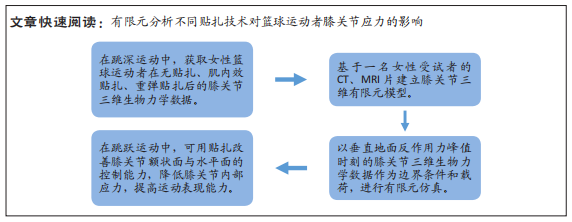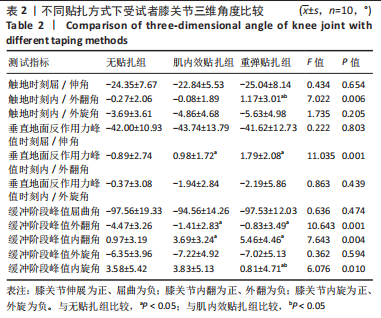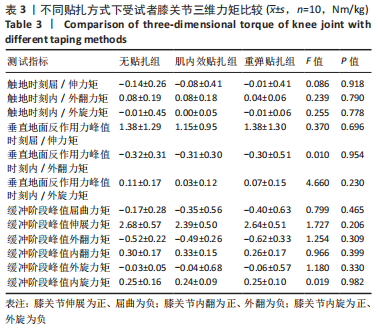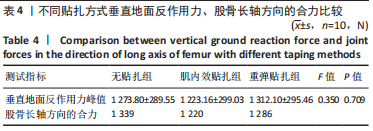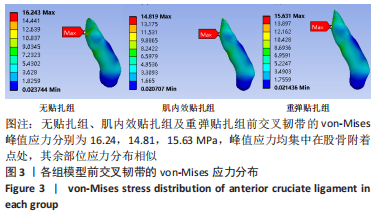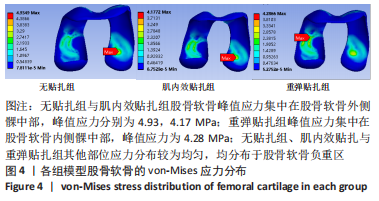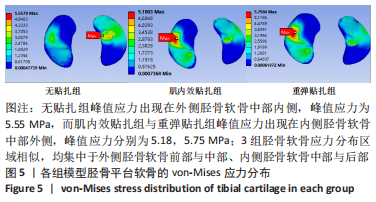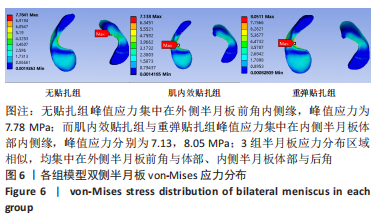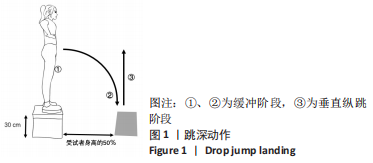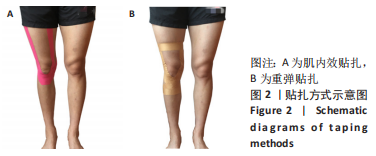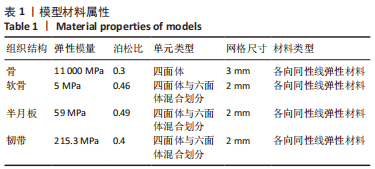[1] YANG C, YAO W, GARRETT W, et al. Effects of an Intervention Program on Lower Extremity Biomechanics in Stop-Jump and Side-Cutting Tasks. Am J Sports Med. 2018;46(12):3014-3022.
[2] DAI B, GARRETT W, GROSS M, et al. The effect of performance demands on lower extremity biomechanics during landing and cutting tasks. J Sport Health Sci. 2019;8(3):228-234.
[3] PFILE KR, HART JM, HERMAN DC, et al. Different exercise training interventions and drop-landing biomechanics in high school female athletes. J Athl Train. 2013; 48(4):450-462.
[4] Padua DA, Marshall SW, Boling MC, et al. The Landing Error Scoring System (LESS) Is a valid and reliable clinical assessment tool of jump-landing biomechanics: The JUMP-ACL study. Am J Sports Med. 2009;37(10):1996-2002.
[5] 张美珍,刘卉,刘万将,等.随机生物力学模型分析篮球运动员和普通大学生ACL损伤危险因素的差异[J].体育科学,2016,36(10):8.
[6] STRAUB R, HORGAN A, POWERS C. Estimation of vertical ground reaction force parameters during athletic tasks using 2D video. Gait Posture. 2021;90:483-488.
[7] SCARBOROUGH DM, LINDERMAN SE, COHEN VA, et al. Neuromuscular Control of Vertical Jumps in Female Adolescents. Sports Health. 2019;11(4):343-349.
[8] BENCKE J, AAGAARD P, ZEBIS K. Muscle Activation During ACL Injury Risk Movements in Young Female Athletes: A Narrative Review. Physiol. 2018;9:445.
[9] HUSTED RS, BENCKE J, ANDERSEN LL, et al. A comparison of hamstring muscle activity during different screening tests for non-contact ACL injury. Knee. 2016; 23(3):362-366.
[10] HUANG C, HSIEH T, LU S, et al. Effect of the Kinesio tape to muscle activity and vertical jump performance in healthy inactive people. Biomed Eng Online. 2011;10(1):70.
[11] 段高营,罗炯,刘立,等.膝关节防护与康复中肌内效贴扎的生物力学作用及优势[J].中国组织工程研究,2018,22(31):5062-5068.
[12] TSAI FH, CHU IH, HUANG CH, et al. Effects of Taping on Achilles Tendon Protection and Kendo Performance. J Sport Rehabil. 2018;27(2):157-164.
[13] 宋法明.不同膝关节贴扎类型对足球运动员急停动作稳定性的影响[J].中国组织工程研究,2017,21(10):1583-1588.
[14] NOKHODCHI N, HOSSEINI M, ATTARAN IRAJ Z, et al. The Effects of Kinesio-tape through Facilitation of Hamstring and Inhibition of Quadriceps on Biomechanical Variables affecting Anterior Cruciate Ligament Injury When Landing in Active Healthy Young Women. J Adv Sport Technol. 2020;4(2):104-113.
[15] CHOI SH, Lim G. Immediate Effects of Ankle Non-elastic Taping on Balance and Gait Ability in Patients With Chronic Stroke: A Randomized, Controlled Trial. J Manipulative Physiol Ther. 2020;43(9):922-929.
[16] HAMZAH A, BERLIANA B, PITRIANI P, et al. The Effects of Kinesio Taping on the Lower-Body Injury Rehabilitation in Female Futsal Athletes. 4th International Conference on Sport Science, Health, and Physical Education (ICSSHPE 2019). 2020:144-147.
[17] GUNER S, ALSANCAK S, Koz M. Effect of two different kinesio taping techniques on knee kinematics and kinetics in young females. J Phys Ther Sci. 2015;27(10): 3093-3096.
[18] STRUTZENBERGER G, MOORE J, GRIFFITHS H, et al. Effects of gluteal kinesio-taping on performance with respect to fatigue in rugby players. Eur J Sport Sci. 2016;16(2):165-171.
[19] DE HOYO M, ÁLVAREZ-MESA A, SAÑUDO B, et al. Immediate effect of kinesio taping on muscle response in young elite soccer players. J Sport Rehabil. 2013; 22(1):53-58.
[20] 祁奇,陈文华,余波,等.肌内效贴对女性大学生膝关节肌力的影响[J].中国康复理论与实践,2015(7):849-853.
[21] 刘立,张庭然,罗炯,等.不同类型贴扎对急停时膝关节的影响[J].中国康复理论与实践,2018,24(11):1349-1354.
[22] HUANG YL, LIN KW, CHOU LW, et al. Immediate Effect of Anterior Cruciate Ligament Protective Knee Taping on Knee Landing Mechanics and Muscle Activations during Side Hops. Int J Environ Res Public Health. 2021;18(19):10110.
[23] 周志鹏,曲峰.3种常见评估前交叉韧带损伤风险落地动作的对比研究[J].天津体育学院学报,2016,31(5):455-460.
[24] CRUZ A, BELL D, MCGRATH M, et al. The effects of three jump landing tasks on kinetic and kinematic measures: implications for ACL injury research. Res Sports Med. 2013;21(4):330-342.
[25] SMITH HC, JOHNSON RJ, SHULTZ SJ, et al. A prospective evaluation of the Landing Error Scoring System (LESS) as a screening tool for anterior cruciate ligament injury risk. Am J Sports Med. 2012;40(3):521-526.
[26] AKBARI M, PAHNABI G, KARIMI H. Immediate Effect of Kinesio Taping on Knee Joint Position Sense after Anterior Cruciate Ligament Reconstruction. J Clin Physiother Res. 2017;(4):162-168.
[27] 潘正晔,马勇,王虹,等.四种方向单腿跳膝关节应力分布特征的有限元分析[J].中国康复医学杂志,2020,35(9):1038-1043.
[28] ZHANG X, YUAN S, WANG J, et al. Biomechanical characteristics of tibio-femoral joint after partial medial meniscectomy in different flexion angles: a finite element analysis. BMC Musculoskel Disord. 2021;22(1):322.
[29] MAKINEJAD MD, OSMAN NA, ABAS WA, et al. Preliminary analysis of knee stress in Full Extension Landing. Clinics. 2013;68(9):1180-1188.
[30] 陈文栋,杨光.膝关节半月板三维有限元模型的动态仿真生物力学分析[J].中国组织工程研究,2016,20(31):4658-4664.
[31] HOLDEN S, DOHERTY C, BOREHAM C, et al. Sex differences in sagittal plane control emerge during adolescent growth: a prospective investigation. Knee Surg Sports Traumatol Arthrosc. 2019;27(2):419-426.
[32] PEEBLES AT, DICKERSON LC, RENNER KE, et al. Sex-based differences in landing mechanics vary between the drop vertical jump and stop jump. J Biomech. 2020; 105:109818.
[33] BATES NA, FORD KR, MYER GD, et al. Timing differences in the generation of ground reaction forces between the initial and secondary landing phases of the drop vertical jump. Clin Biomech (Bristol, Avon). 2013;28(7):796-799.
[34] 刘卉,美珍,李翰君,等.足球运动员在急停起跳和侧切动作中前交叉韧带损伤的生物力学特征研究[J].体育科学,2011,31(12):38-43.
[35] GARCIA-LUNA MA, CORTELL-TORMO JM, GARCIA-JAEN M, et al. Acute Effects of ACL Injury-Prevention Warm-Up and Soccer-Specific Fatigue Protocol on Dynamic Knee Valgus in Youth Male Soccer Players. Int J Environ Res Public Health. 2020; 17(15):5608.
[36] BEREZUTSKY V. Possibilities of kinesio taping to prevent injuries of professional dancers. Int J Occup Saf Ergon. 2019;25(4):638-645.
[37] BIZ C, NICOLETTI P, TOMASIN M, et al. Is Kinesio Taping Effective for Sport Performance and Ankle Function of Athletes with Chronic Ankle Instability (CAI)? A Systematic Review and Meta-Analysis. Medicina (Kaunas). 2022;58(5):620.
[38] WU X, PEI B, WANG W, et al. Finite Element Analysis of a Novel Approach for Knee and Ankle Protection during Landing. Appl Sci. 2021;11(4):1912.
[39] 刘丽娟,敖丽娟.前交叉韧带重建术后的生物力学研究现状[J].中国康复医学杂志,2015,30(6):619-622.
|
